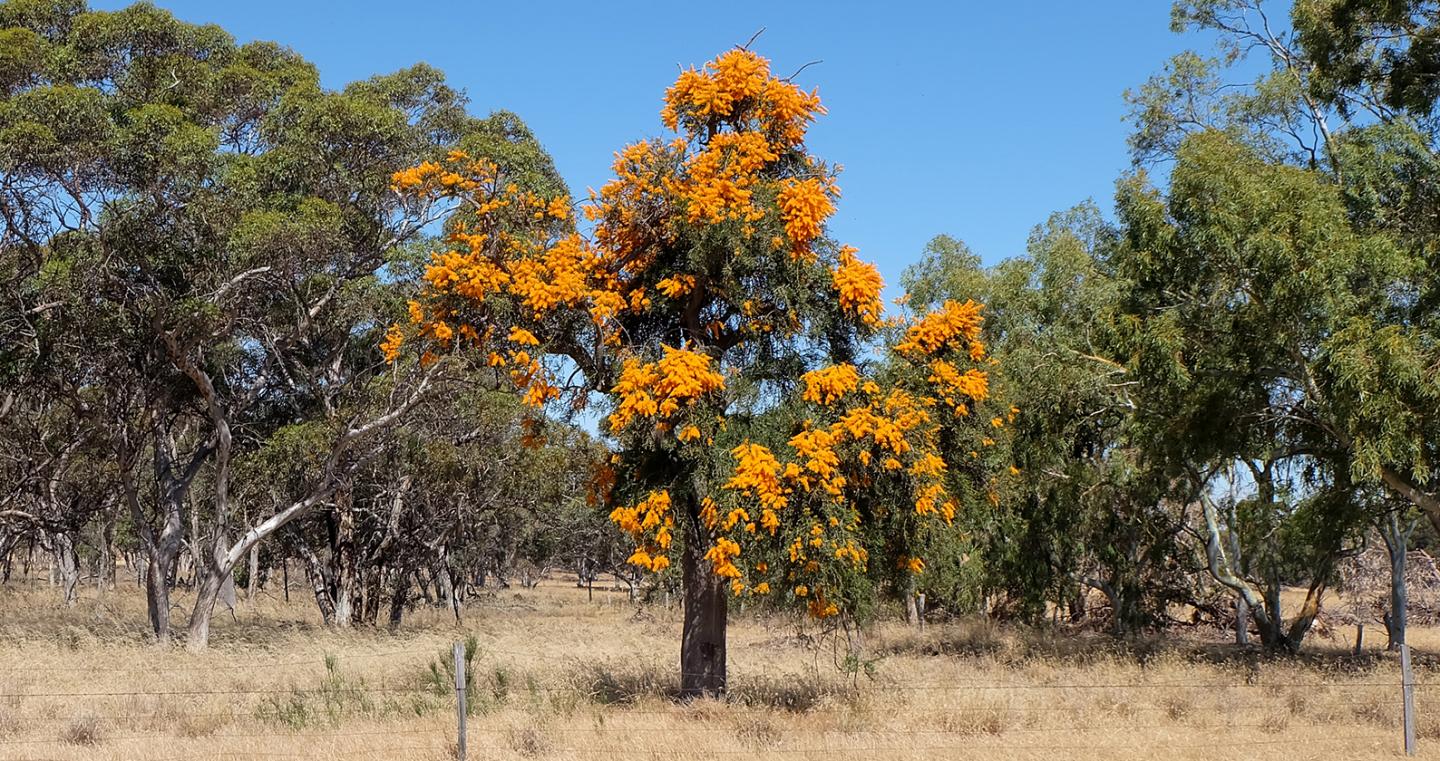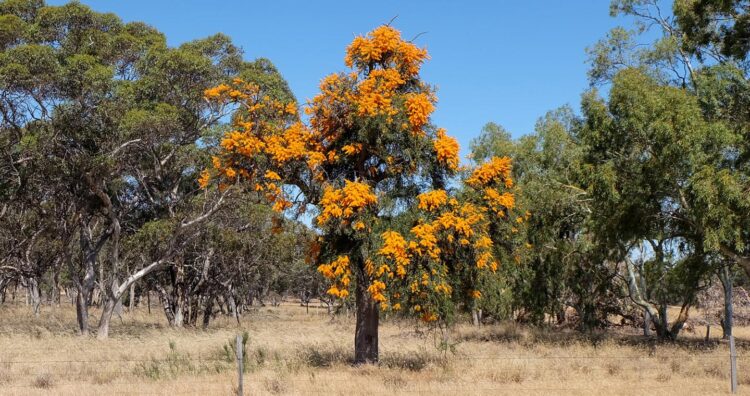
Credit: Curtin University
A closer look at DNA from south-western Australia’s native Nuytsia floribunda, known as the WA Christmas Tree, has found that temperature, rather than rainfall, impacts the tree’s resilience and reproductive success.
The WA Christmas Tree is the largest parasitic plant in the world, obtaining its water and nutrients from host plants using a specialised structure called a haustorium to attach its own root system to the roots of others.
Lead researcher Curtin PhD candidate Sheree Walters from the ARC Centre for Mine Site Restoration said that the latest DNA sequencing techniques were used in the study, which compared the WA Christmas tree to the non-parasitic Swamp Paperbark tree (Melaleuca rhaphiophylla) to determine if the different ways they acquire water affected their adaptation to climate.
“Traditionally, we would have used common garden studies to collect this data, so basically growing the different tree populations in the same area to compare growth and survival under the same environmental conditions,” Ms Walters said.
“Here we did the same comparison using a next generation genotyping-by-sequencing approach that essentially cuts the trees’ DNA up into lots of short pieces that we can sequence. In this study we ended up with tens of thousands of different pieces of DNA sequenced for each species.
“We found that temperature of the local environment was more important for the adaptation and resilience of the WA Christmas Tree, while precipitation, or rainfall, was more important for the Swamp Paperbark, a non-parasitic plant.
“When plants are adapted to local climates they tend to have greater reproduction and survival in those same environments. For example plants adapted to higher temperatures will generally survive better at higher temperatures than plants adapted to lower temperatures.
“Temperature is important for parasitic plants because it affects the rate at which plants transpire water from their leaves. For parasitic plants to survive they have to transpire water at a faster rate than their host plants.
“Precipitation is important for non-parasitic plants as they generally rely on rainfall to survive.”
The three year project was carried out using samples collected from 17 sites across the South Western region of WA and will have implications for the conservation and restoration of the species.
“The findings from our study could now be used in further research to identify areas where we can collect seed for these two species and use it in restoration projects,” Ms Walters said.
###
The full paper Contrasting patterns of local adaptation along climatic gradients between a sympatric parasitic and autotrophic tree species, published in Molecular Ecology can be read online here.
Media Contact
April Kleer
[email protected]
Original Source
https:/
Related Journal Article
http://dx.





